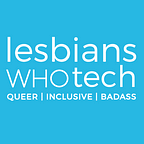Disability Rights Are Human Rights
When Dr. Martin Luther King Jr. wrote “injustice anywhere is a threat to justice everywhere” in his “Letter from Birmingham Jail”, he reminded us that our inherent struggles are interconnected. No one person is free until the collective experiences freedom.
So many of us experience discrimination and oppression on the basis of our inalienable characteristics. We are denied opportunity due to our identities, cast aside due to our perceived differences, and relocated to the margins due to society’s unwillingness to understand who we are.
While our collective fight for justice has seen some victories, we have historically left the disability community behind in our pursuit for equity. Despite notable progress since the 1990 passage of the Americans with Disabilities Act (ADA), Americans living with disabilities still experience poverty, disenfranchisement, social segregation, and mass incarceration at disproportionate rates.
As we recognize Disability Pride Month and National Disability Independence Day, it’s more important than ever to include disability justice in the fight for social justice — in tech, the workplace, and beyond.
Building an Accessible Workplace ::
Workplace accessibility is vital to maintaining a functional and sustainable workforce that benefits and champions all employees regardless of ability. Accessibility is good for business.
Under the Americans With Disabilities Act (ADA), physical accessibility compliance is required by law to break down barriers for workers with disabilities. ADA accessibility standards apply to commercial facilities, places of public accommodation, and government facilities under new construction. Examples of these public accommodations include wheelchair accessibility, braille signage, and accessible technology in the workplace.
But there’s more that can be done to create an affirming and accessible workplace. Disability inclusion trainings should be implemented for hiring managers, HR staff, and supervisors to dispel myths and stigmas around the experiences of disabled workers. Further, applicants should not be asked to disclose disabilities in the hiring process to prevent unconscious hiring bias.
Building an accessible workplace may require revisiting your company policies to ensure that they prohibit discrimination against folks with physical and intellectual disabilities, mental illnesses, and neurodiversities. If you’re not sure how to make your employee handbook more accessible, enlist the expert insights of a consultant or firm that can work with your company to create fully inclusive policies. Resources are everywhere, Squad!
Finally, building an accessible workforce requires demonstrating flexibility and a willingness to accommodate employees based on their unique needs and abilities. Implement new technologies (like AI transcription software for Zoom meetings) and host frequent training sessions to ensure that your staff can use the technology and that it meets their needs. And whenever possible, explore work-from-home options for employees that face challenges accessing the workplace.
An accessible workplace is built on empathy and understanding. Keep up-to-date with disability justice legislation to understand the ever-changing landscape of the disability justice movement and how you can help champion your employees of all abilities.
Investing in an Accessible Tech Industry ::
Accessible technology is the new frontier of innovation.
In our growing metaverse, digital accessibility is crucial to ensuring people of all backgrounds can access digital services and data based on their individual needs.
While there have been notable improvements in how tech platforms manage accessibility, the industry has made it consistently challenging for people living with disabilities to access their products and services.
But as queer, inclusive techies leading the fight for progress in the tech industry, we can fix this ongoing accessibility problem.
From a perceivable tech perspective, digital accessibility compliance guidelines like WCAG 2.1 work to make electronic devices more accessible. Technologies like auto-captioning and distinguishable color schemes account for users with disabilities that include blindness, low vision, deafness, hearing loss, and photosensitivity. Whenever possible, digital content should be accessible and easily understood by techies of all abilities.
Sensory tools are necessary to digital operations to ensure that people with varying disabilities can access websites and platforms using alternative input modalities. These modalities can assist with vision impairment and hearing loss.
Web accessibility evaluation methods include Accessibility Conformance Testing (ACT) and Evaluation and Report Language (EARL), which can evaluate web accessibility, testing tools, quality assurance, and web content frameworks.
Not sure where to start building out accessibility at your tech company? Here’s a list of how the nation’s top tech companies have rolled out internal accessibility practices and external accessibility products in the last year.
Squad, disability justice is a necessary and vital component of social justice advocacy, LGBTQIA+ liberation, and tech accessibility. The future of work in the tech industry (and beyond) is accessible and inclusive. We can all create a more accessible world.
It’s time to get started.
